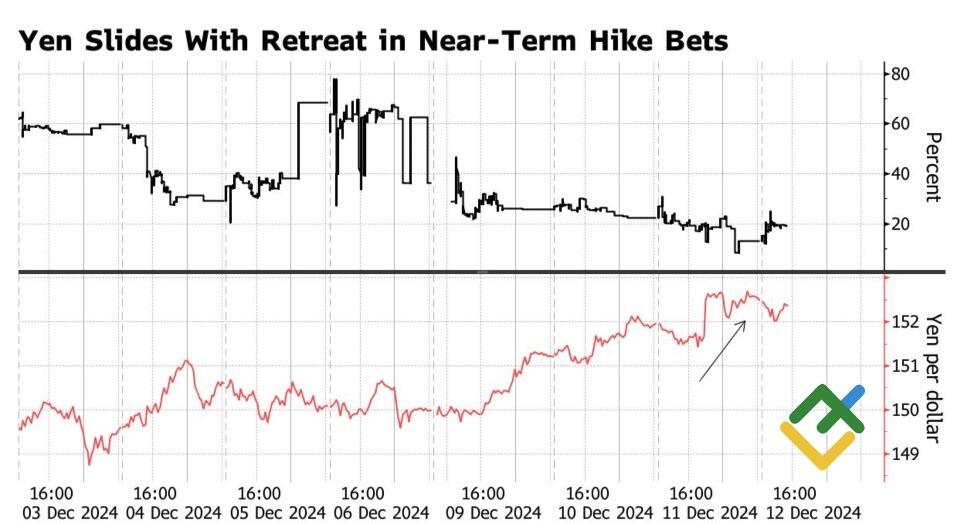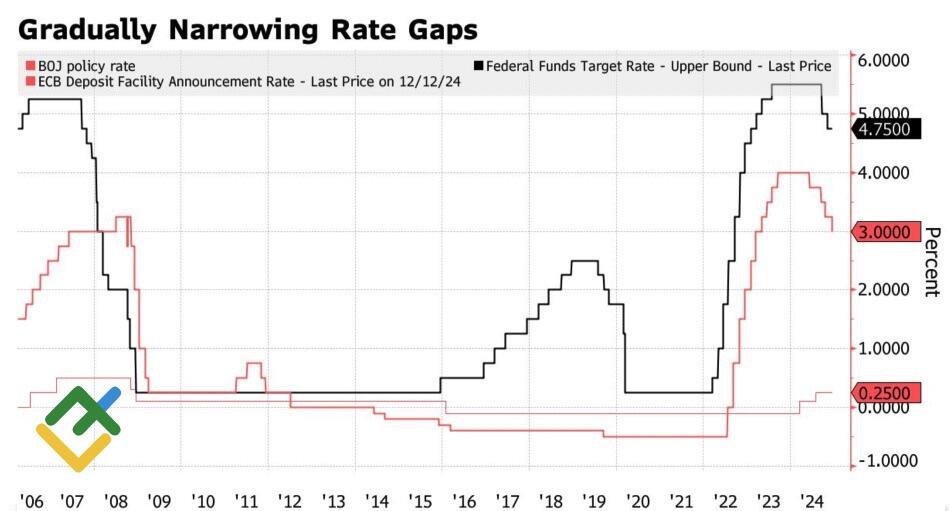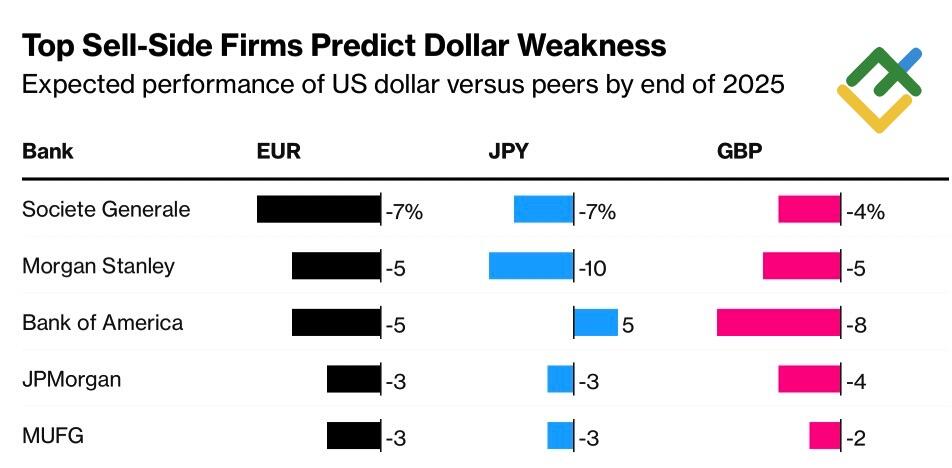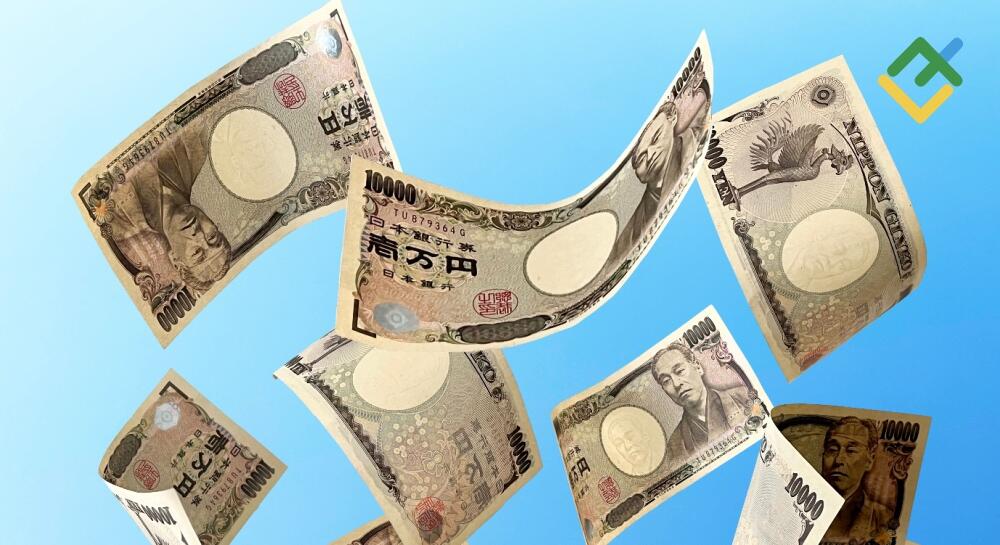
As the autumn drew to a close, Japanese economic data prompted a decline in USDJPY quotes, reflecting an increased likelihood of a Bank of Japan rate hike in December. However, when political factors interfere with the central bank’s decision-making process, the outcome can be suboptimal. Let’s discuss this topic and make a trading plan.
The article covers the following subjects:
Major Takeaways
- Strong data on Japan’s economy has not helped the yen.
- A steady BOJ rate helps the Japanese government.
- The USDJPY pair’s trajectory depends on the decisions of other central banks.
- The US dollar may rise to 155 and 157 against the Japanese currency.
Weekly Fundamental Forecast for Yen
Will the Bank of Japan act contrary to the government’s expectations? In late November, the derivatives market indicated a 66% probability of an overnight rate hike in December, based on a batch of strong data and Kazuo Ueda’s statement that the time for an overnight rate hike was approaching. However, as the Policy Board’s next meeting on December 19 approaches, those odds have diminished significantly, allowing the USDJPY pair to soar significantly.
When a Reuters insider states that BoJ officials would prefer to maintain the overnight rate at 0.25 for an extended period and the media notes that an increase would necessitate a significant weakening of the yen, it prompts questions. Traders, who are accustomed to data-driven decision-making, began reducing their USDJPY short positions as the likelihood of monetary tightening in December faded.
USDJPY Performance and BoJ Rate Hike Expectations
Source: Bloomberg.
There is a divergence of opinion among Bloomberg experts: 44% of the 52 respondents anticipate that the normalization cycle will persist until the end of 2024, while 52% favor January, with the remainder indicating a later date. Furthermore, market expectations are gradually shifting in favor of the latter group of economists. The pivotal point in this analysis is the upcoming summer elections to Japan’s upper house of parliament. The ruling party has already experienced a setback in the political landscape and now faces the challenge of addressing consumer demands through fiscal stimulus measures.
Maintaining an accommodative monetary policy benefits Shigeru Ishiba and his team, and the Bank of Japan has the flexibility to take its time. At the very least, there is considerable uncertainty surrounding Donald Trump’s policies.
Major Central Banks’ Interest Rates
Source: Bloomberg.
Bank of America forecasts that if the Bank of Japan maintains borrowing costs at 0.25% and does not signal an increase in January, the value of the Japanese yen against the US dollar will reach 155 and then 157. The weakness of the yen will ensure that inflation remains above the 2% target, which should encourage the Bank of Japan to continue its monetary tightening cycle in the future. Against this backdrop, large banks are bearish on the USDJPY pair. For example, Morgan Stanley expects the quotes to lose 10% by the end of 2025.
Banks’ Forecasts on Major Currencies
Source: Bloomberg.
However, traders are focused on the immediate market conditions. There are several potential scenarios. A 25-basis-point increase in the overnight rate to 0.5% would significantly strengthen the yen. Similarly, a clear indication from the Bank of Japan that it plans to continue the normalization cycle in January would have a similar impact, albeit at a slower pace. If the BoJ continues to delay and shifts expectations of monetary restriction to March without providing clear details, USDJPY bears will face strong headwinds.
Weekly USDJPY Trading Plan
The decision to open long trades at 150.8 was a sound one, but the pair’s trajectory will depend on the decisions of the Fed and the Bank of Japan. If the USDJPY pair fails to breach 154.45 and 155.55, this will facilitate profit-taking and a possible trend reversal.
Price chart of USDJPY in real time mode
The content of this article reflects the author’s opinion and does not necessarily reflect the official position of LiteFinance. The material published on this page is provided for informational purposes only and should not be considered as the provision of investment advice for the purposes of Directive 2004/39/EC.
{{value}} ( {{count}} {{title}} )
This post is originally published on LITEFINANCE.






